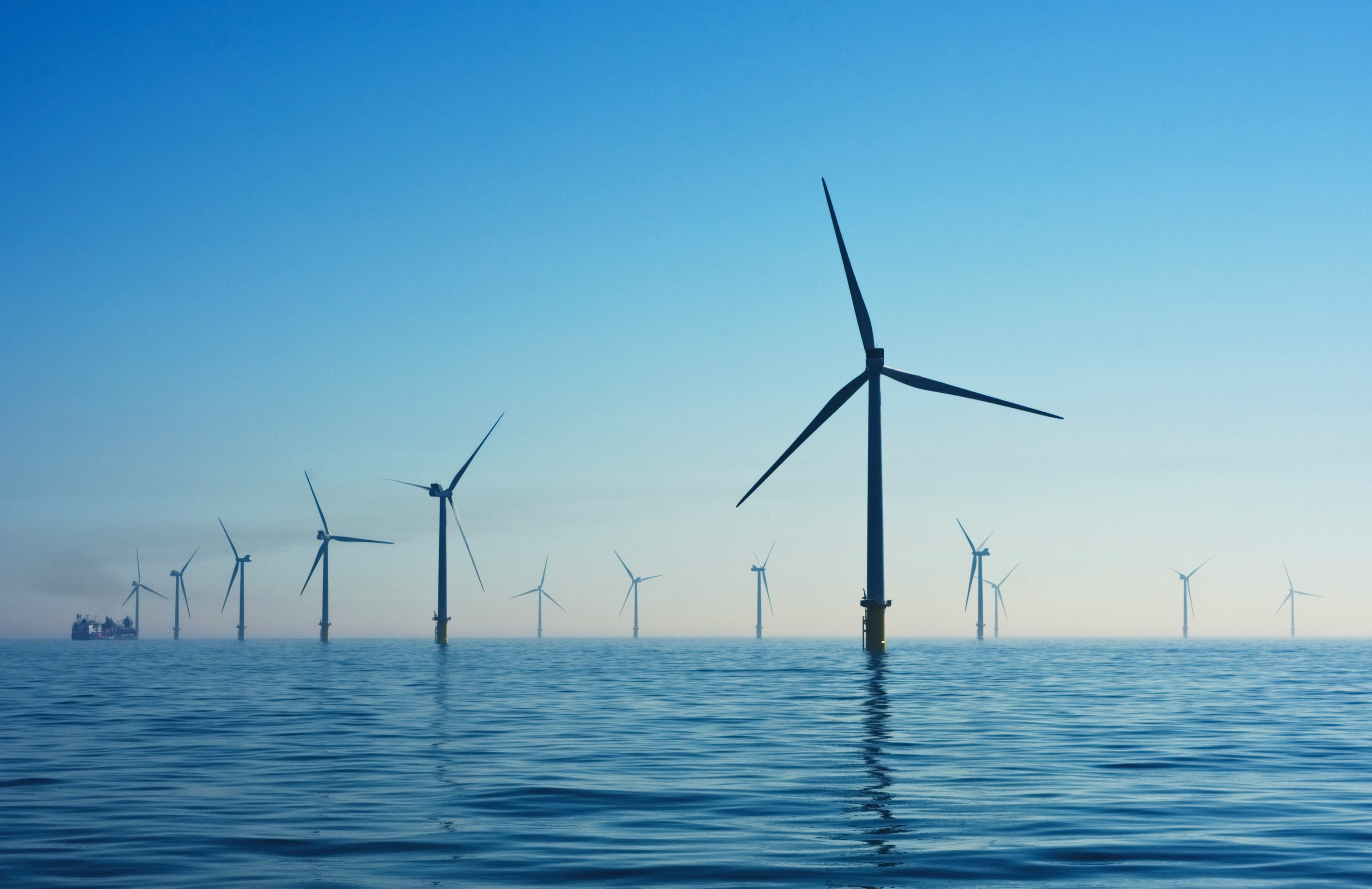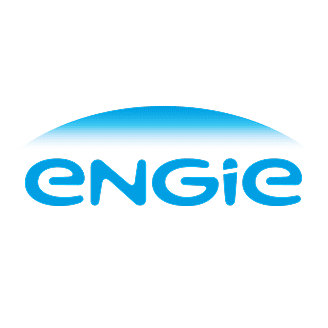
Enhance marine life with floating wind farm project
 ENGIE
ENGIE总结
Aims to increase the ecological function of offshore floating wind farms by installing replicas of natural nursery habitats at the base of wind farm platforms.
Context
The ENGIE Group has set an ambitious target to reach Net Zero Carbon by 2045, following a “well below 2°C” trajectory in line with the Paris Agreement. ENGIE's goal includes emissions (scopes 1, 2, and 3). This target implies a minimum reduction of 90% in emissions between 2017 and 2045 and the neutralization of residual emissions through internal carbon absorption activities and the use of carbon removal credits. Engie recognizes its contribution to GHG emissions through its operations, energy production, and services. For that reason, ENGIE actively pursues a strategy of decarbonization in its operations, support for national climate goals, and continuous transparency through regular reporting.
To enhance ENGIE's decarbonization trajectory – its strategy is tailored to:
Accelerate Renewable Energy Deployment
Phased Emissions Reduction Milestones
Climate Adaptation
Carbon Removals: Residual Emission
In parallel, December 2022 was a major step for biodiversity with the signing of the Kunming-Montreal Global Biodiversity Framework (GBF). Numerous economic players, including ENGIE, joined forces during this 15th Conference of the Parties to demonstrate their involvement and underline the need to act immediately to halt the loss of biodiversity and reverse the downward trend, while also continuing efforts to respect the Paris Climate Agreement. Climate change and Nature are closely linked and are two elements that each company must act on simultaneously, while also integrating societal challenges, to ensure a successful energy transition.
Ocean Winds (OW), an international company dedicated to offshore wind energy, was created as a 50-50 joint venture by EDP Renewables and ENGIE in order to support this strategy, in particular point 1: Accelerate Renewable Energy Deployment.
The project is located in France, Occitanie region off the coast between the cities of Leucate & Le Barcarès (assembly at port of Port‑La‑Nouvelle).
Solution
The objective of Ocean Wind’s Éoliennes flottantes du golfe du Lion (EFGL) project is to demonstrate the technical and environmental feasibility of floating offshore wind in the French Mediterranean through a 30 MW pilot farm with innovative, biodiversity-friendly solutions.
The project being located in a marine national park, nature‑inclusive design was built in from the start, including ECOCEAN’s Biohut® nursery units on one floater, accompanied by comprehensive environmental monitoring (birds and bats detection, biodiversity observation buoy).
• The nursery units were successfully installed on a floater of the company’s floating pilot project. • This marks the first time artificial marine habitats are integrated into a floating offshore wind farm
The installation of these nursey units on a floater is the result of an unprecedented approach in floating offshore wind power: never before has a floating wind farm been designed with the goal of creating a positive impact on marine biodiversity by diversifying habitats.
To bring this ambition to life, company relied on the innovative expertise of a Montpellier-based company leading in eco-designed solutions for ecological restoration in aquatic environments.
Using steel cages to replicate natural nursery habitats is an innovative solution. The first cage contains a natural substrate made of oyster shells that fosters the development of the trophic chain, while a second, empty cage surrounds the first, creating a refuge space for small fish when predators approach. This setup supports the development of marine fauna and provides post-larval fish with a favourable environment—offering both diverse food sources and protection—enabling them to reach a size sufficient for survival in the natural environment.
The installation of these nursery units is the result of a close almost decade-long collaboration between the company, its solution-provider partner, and project partners. It is grounded in early research like the Biodiversity Observation Buoy (BoB) buoy deployment at the wind farm pilot which confirmed the potential of a significant “reef effect”—showing that floating structures located offshore can attract a wide variety of coastal marine species.
The company’s floater, combined with comparative monitoring will contribute to the scientific understanding between offshore and coastal ecosystems. This shapes more environmentally integrated practices for future offshore wind projects.
Impact
Sustainability impact
Climate
Targeted scopes: Scope 3, Category 2 (Capital Goods) for future floating projects through validated designs and industrial learnings. As a pre‑commercial demonstrator in France, its principal climate value is enabling replication at larger scale.
Nature
Located in the Gulf of Lion Marine Natural Park, the project integrates nature‑inclusive design.
The project integrates ECOCEAN Biohut® artificial nursery habitats on one of the platforms—the first time such devices have been incorporated into a floating wind farm. Each nursery unit consists of a steel cage system with an inner compartment of natural substrate (e.g., oyster shells) that fosters biofilm and invertebrates for juvenile fish feeding, protected by an outer mesh that limits predator access. Units are fixed to horizontal braces in line with floater OEM and fabricator constraints to preserve structural integrity and safe access.
Because the wind farm sits inside the Gulf of Lion Marine Natural Park, the team worked for years with national/local authorities, scientists, and fishers to ensure responsible siting and to design biodiversity measures with credible scientific backing (e.g., the earlier Biodiversity Observation Buoy (BOB) pilot that carried the nursery units starting in 2019).
Monitoring and KPIs: the project runs an innovative five‑year monitoring program tailored to floating assets, combining: underwater visual census, passive acoustic monitoring, eDNA analysis, camera traps, drones, and fixed fauna observation. To enable this, EFGL has authorized scientific diving at the site.
Because the wind farm is offshore and floating, the objective is not to replicate coastal nursery functions exactly, but to enhance ecological functions feasible in a pelagic, structure‑associated context (refuge/feeding for juveniles and invertebrates, contribution to fish assemblage complexity) and to generate evidence for scaling to commercial parks.
Social
The project anchors a Mediterranean floating‑wind industrial cluster centered on the port of Port‑La‑Nouvelle, creating nearly 400 direct and indirect jobs regionally, plus ~100 jobs from the conversion of an Eiffage site in Fos‑sur‑Mer to manufacture floaters. It also involved local fishers in co‑activity planning within the Marine Natural Park and marine security.
Biodiversity partner Ecocean is also a local company from Montpellier. EFGL’s common work with them allowed for Ecocean’s international growth and potential solutions for floating offshore wind farms worldwide.
Business impact
Benefits
The installation of Biohuts’ initiative aims to assess the ability of these ecological solutions on floating wind turbines to attract and shelter a wide variety of marine species and thus contribute to improving industry practices for better environmental integration of such floating offshore wind projects.
The first observations made by divers from the University of Perpignan revealed the presence of numerous species such as seabream, salema, sea bass, as well as greater amberjack, a grouper, and an octopus, just a few weeks after the offshore wind farm was installed by Ocean Winds and the Banque des Territoires.
These initial results, which are of major importance for the project, help deepen understanding of the interactions between coastal and offshore environments and pave the way for practices that combine energy transition and ecological restoration in future offshore wind projects.
Costs
EFGL secured non‑recourse construction financing with the European Investment Bank and a consortium of international lenders (KfW IPEX-Bank, Crédit Agricole CIB, Banco Santander, S.A., Mizuho Bank, Danish ECA EKF as well as the European Investment Bank (EIB).), alongside public support via ADEME/France 2030.
The cost of installing the nursery unit is not shared.
Implementation
Typical business profile
Utility‑scale developers and partners operating in deep‑water wind regions with access to an industrial port for heavy‑lift/quayside assembly, strong stakeholder engagement capabilities, and experience with complex multi‑contract EPC set‑ups.
Approach
Pre-Installation Trials: From 2019-2023, a multi-year scientific trial at the EFGL site used a Biodiversity Observation Buoy (BoB) equipped with Biohuts® to test their potential to enhance marine biodiversity. The trial, involving Ocean Winds, ECOCEAN, the Marine Natural Park of the Gulf of Lion, local fishers, and the University of Perpignan, showed that floating structures with Biohuts® attract diverse marine species.
Scaling Up: Encouraged by the trial, the EFGL team installed Biohuts® on a WindFloat® platform, marking the first integration of artificial habitats in a floating offshore wind farm to boost biodiversity.
Scientific Monitoring: EFGL launched a five-year monitoring program—using underwater surveys, acoustic monitoring, eDNA analysis, cameras, and fixed observation stations—to assess ecological impacts. This program is validated by the University of Perpignan and leverages extensive prior Biohut® experience.
Sourcing & Design: Developed by ECOCEAN, Biohuts® are steel cages with natural substrates to support food chains and provide safe habitats for small marine organisms. Their design results from seven years of collaboration across the value chain.
Impact & Knowledge: Monitoring Biohut®-equipped floats will help compare species populations and connectivity, providing valuable data for future floating wind projects and reinforcing EFGL’s commitment to marine ecosystem sustainability.
Stakeholders involved
Private Companies:
Ocean Winds – ENGIE & EDP Renewables 50-50 JV. Majority stakeholder of the project
ENGIE
EDP Renewables
Public Financial Institution: Banque des Territoires – holds a minority stake of 20% in the project. Supports sustainable development & regional investment.
Private Ecological Engineering Company: designed biohuts (nursery units) installed on the floater, making the project the world’s 1 nature-inclusive floating wind farm.
Governmental Environmental Body: Marina Natural Park of the Guld of Lion – participated in environmental assessments and biodiversity monitoring.
Academic Institution: University of Perpignan- Marine Ecosystem Research Center – conducted scientific studies on the ecological impact of Biohuts (nursery units) and floating structures, contributing to the reef effect analysis.
Private Technology Designer: Principle Power – designer of the WindFloat floating platform technology used in the project.
Others:
Vestas (V164‑10 MW),
Eiffage Métal (floater fabrication)
JDR/SDI (cables),
Bureau Veritas (certification)
Port of Port‑La‑Nouvelle (Euroports and SEMOP)
RTE (TSO)
Key parameters to consider
Initiative maturity: 3rd‑generation WindFloat® technology; pilot scale targeting commercial replication.
Specificities: located within a Marine Natural Park; stringent environmental studies and monitoring.
Subsidies/Support: ADEME / France 2030 support; European Investment Bank and international lenders financing.
Implementation and operations tips
Reserve industrial port capacity early and align schedules with other regional projects to avoid clashes.
Maximize quayside pre‑commissioning to reduce offshore exposure.
Design for nature‑inclusivity from the outset (e.g., Biohut®) and secure scientific partners for monitoring.
Establish structured engagement with fishers and marine park authorities to manage co‑activity.
Plan for installation vessel availability and contingency (wet‑storage options, alternative vessels).